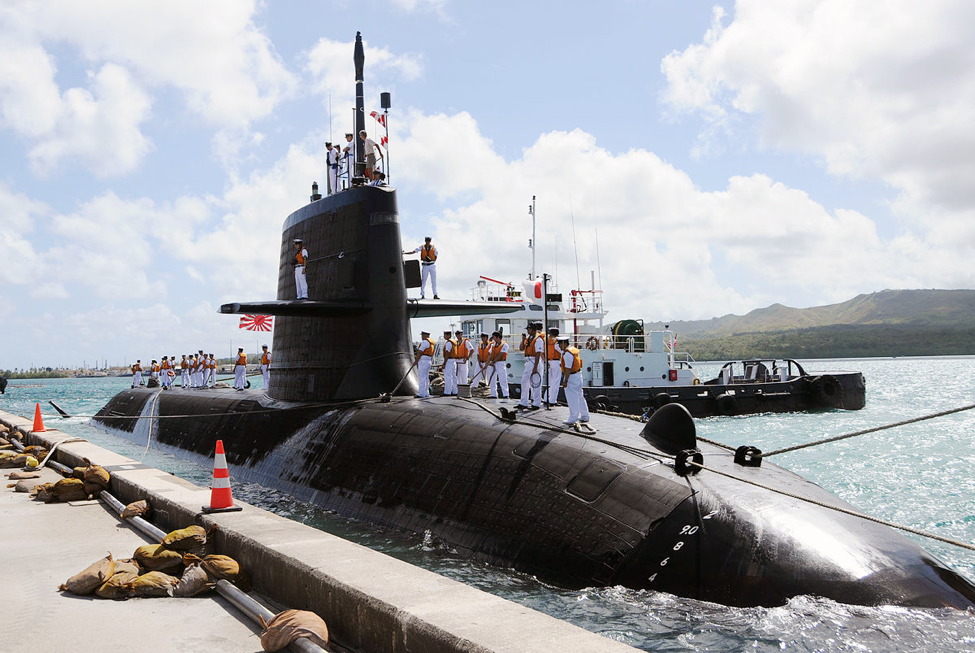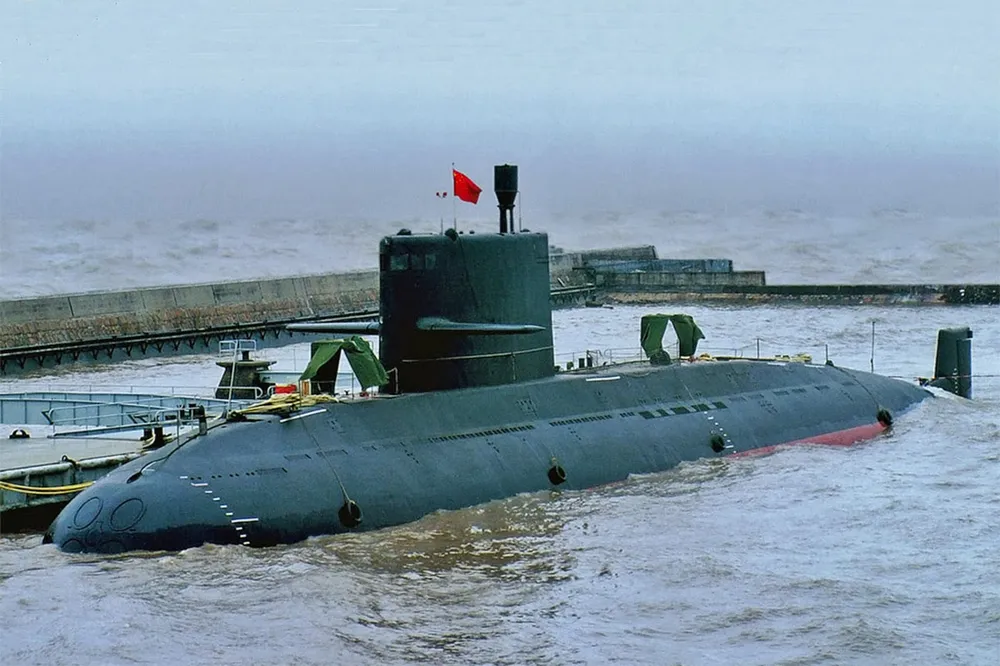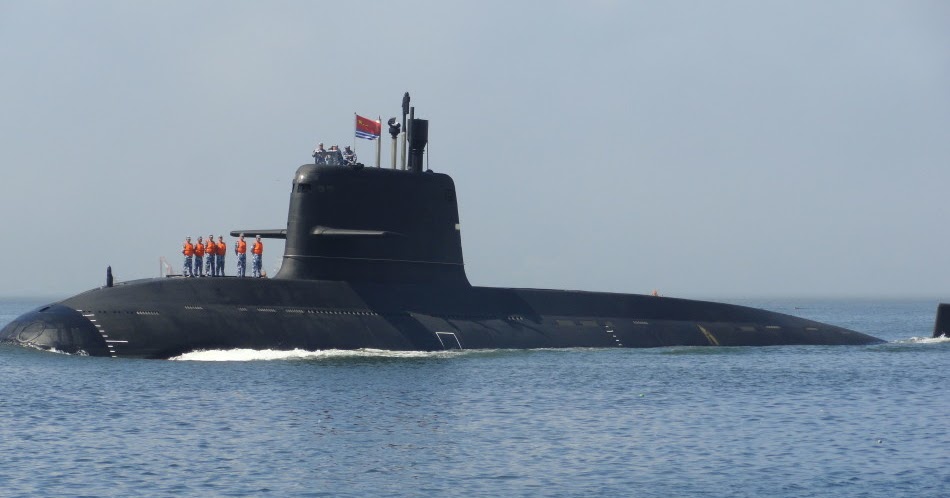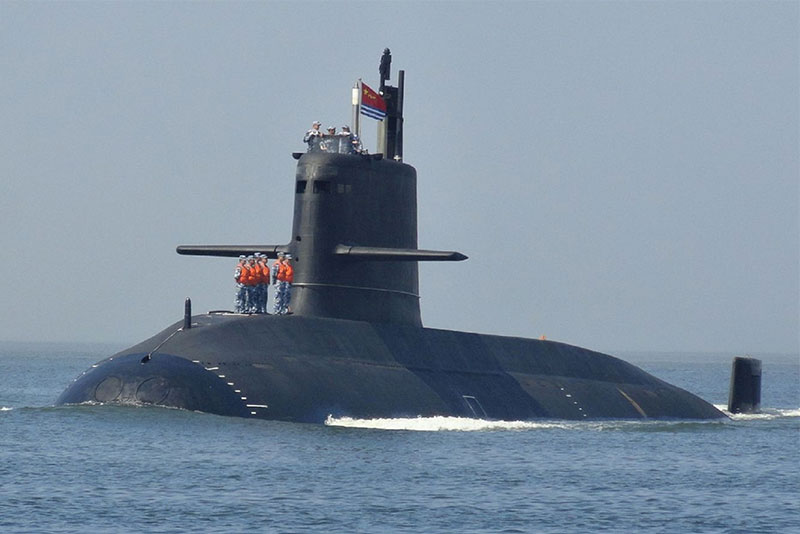Egypt Poised to Redraw Mediterranean Power Balance with Chinese Yuan-Class Submarine Deal
If Egypt proceeds with the Type 039A purchase, it would signify a major strategic recalibration in its defence procurement approach, simultaneously enhancing Chinese influence across the Middle East and North Africa and signaling a diversification away from traditional Western suppliers.
(DEFENCE SECURITY ASIA) – Egypt is reportedly in the final stages of negotiations to acquire the Type 039A Yuan-class submarines from China, a platform highly esteemed among military analysts for its formidable stealth and advanced underwater endurance.
The Type 039A submarines are widely recognized for their exceptional low acoustic signatures and are equipped with Air-Independent Propulsion (AIP) systems, granting them prolonged submerged operations without surfacing, a capability crucial for strategic deterrence and surprise attacks in congested maritime environments.
“These submarines (Type 039A made by China) would significantly enhance Egypt’s overall underwater capabilities to confront increasingly critical undersea security challenges in the region, driven by mounting geopolitical uncertainty,” remarked a local military analyst, underlining the escalating importance of undersea dominance amid global maritime competition.
Should the deal be finalized, the Yuan-class submarines would replace Egypt’s ageing fleet of four Type 033 Romeo-class submarines, themselves derived from Soviet-era designs but manufactured and modernized by China during the Cold War.
According to Middle Eastern defence sources, the negotiations surrounding the acquisition of the Type 039A not only involve submarine deliveries but also complex discussions on technology transfers and the integration of Egyptian-manufactured systems into the Chinese platforms, potentially boosting Cairo’s indigenous defence industry.
Egypt had previously acquired its Romeo-class submarines in the early 1980s, purchasing eight Chinese-built Type 033 units — a localized version of the Soviet Project 633 design — to bolster its maritime deterrence capabilities after relations with the Soviet Union deteriorated.
Between 1982 and 1984, China delivered these submarines to Egypt after a comprehensive modernization program that included upgrades to sonar, fire control systems, and onboard electronics, enabling them to meet Egyptian naval operational requirements in the post-Cold War regional environment.

The acquisition of the Romeo-class submarines marked a pivotal step in Egypt’s ambition to develop undersea warfare competencies, a capability that evolved further through subsequent procurement of advanced German-built Type 209/1400mod submarines, reflecting Cairo’s growing emphasis on maritime strategic depth.
If Egypt proceeds with the Type 039A purchase, it would signify a major strategic recalibration in its defence procurement approach, simultaneously enhancing Chinese influence across the Middle East and North Africa and signaling a diversification away from traditional Western suppliers.
The Yuan-class submarines, armed with sophisticated AIP systems, next-generation sonar suites, and the potential to launch land-attack cruise missiles from underwater, promise to dramatically elevate the Egyptian Navy’s undersea strike capabilities to a level comparable — if not superior — to several NATO maritime forces operating in the Mediterranean.
The deployment of Yuan-class submarines would enable Egypt to execute a wide array of high-end naval missions, including maritime interdiction, covert surveillance, long-range strike operations, and asymmetric undersea warfare, particularly across critical chokepoints like the Suez Canal and Bab el-Mandeb Strait, where control is vital to global energy flows.
The addition of Chinese-origin submarines into Egypt’s fleet would alter the naval balance in the Mediterranean, injecting non-NATO technology into a theatre historically dominated by Western-designed platforms, and potentially complicating interoperability with traditional allies.
Such a strategic move would send a resounding geopolitical signal to Egypt’s long-standing partners in the United States and Europe that Cairo is willing to recalibrate its defence alliances in response to shifting international dynamics and growing frustration over Western arms export restrictions.

The Type 039A Yuan-class submarines are armed with a diverse and lethal suite of weapons, including 533mm heavyweight torpedoes such as the Yu-6 and Yu-4 models, capable of engaging enemy surface combatants and submarines at ranges exceeding 45 kilometers with high accuracy.
They are also equipped with YJ-82 sub-launched anti-ship cruise missiles, which boast operational ranges between 40 and 60 kilometers, enabling Egyptian submarines to strike adversary vessels from concealed positions without exposing themselves to counterattack.
Moreover, there is credible potential for Yuan-class submarines to integrate land-attack cruise missiles like the CJ-10K, providing Egypt with strategic deep-strike capabilities from underwater platforms, although full operational deployment of such missiles on baseline Type 039A models remains to be officially confirmed.
The submarines are further capable of deploying sophisticated naval mines through their torpedo tubes, enabling Egypt to deny access to vital sea lanes and protect its maritime approaches against hostile incursions.
Operationally, the Type 039A’s combination of stealth, AIP-enhanced submerged endurance, and versatile armaments would allow Egyptian submarines to undertake extended patrols, intelligence gathering, and preemptive strikes against adversarial assets far from national shores while remaining virtually undetectable.
From a global perspective, Egypt’s procurement of Yuan-class submarines would significantly bolster China’s standing as a premier supplier of next-generation submarine technology, challenging Germany’s dominance with its Type 209/212 series and South Korea’s ambitions with its KSS-III program in the international arms market.

Strategically, it would expand China’s geopolitical footprint into the Mediterranean Sea — a vital crossroads historically dominated by NATO naval operations — thereby intensifying the ongoing global competition for influence in key maritime domains.
Regionally, the deployment of advanced submarines like the Type 039A would dramatically enhance Egypt’s maritime prestige, positioning it as the preeminent naval power on the African continent and strengthening its leadership role within the Arab League, the African Union, and regional security initiatives.
From Washington’s viewpoint, Egypt’s potential acquisition of Chinese Yuan-class submarines would likely be interpreted as a direct challenge to American strategic influence in the Middle East, especially given the growing penetration of Chinese military technologies into the arsenals of traditional U.S. security partners.
The United States would almost certainly respond with formal diplomatic warnings, raising concerns over potential risks to allied interoperability and hinting at punitive measures under the Countering America’s Adversaries Through Sanctions Act (CAATSA), legislation previously employed against countries engaging in significant arms transactions with Russia and China.
Washington might also reassess the structure and terms of its substantial US$1.3 billion annual military aid package to Egypt, a longstanding instrument of American influence designed to preserve strategic relations with Cairo since the late 1970s.
For Israel, despite its stable diplomatic ties with Egypt following the 1979 Camp David Accords, the introduction of stealth-capable Yuan-class submarines into Egyptian service would present a profound new undersea threat dimension along Israel’s southern maritime frontier.

The operational presence of AIP-powered submarines in the Eastern Mediterranean would raise serious concerns over Egypt’s enhanced capacity for clandestine reconnaissance and potential long-range strike operations targeting sensitive Israeli infrastructure.
In anticipation, Israel would likely intensify its maritime surveillance efforts, deploying expanded satellite reconnaissance, maritime UAV patrols, and undersea sensor networks to track Egyptian submarine movements and preempt potential threats.
Concurrently, Israel is expected to expedite the modernization of its own submarine force, particularly through the introduction of the advanced Dolphin II-class submarines from Germany, capable of strategic deterrence missions involving land-attack cruise missiles.
Within NATO, the integration of Chinese-built submarines into Egypt’s fleet would pose significant challenges to alliance maritime operations in the Mediterranean and Red Sea, especially in the areas of command interoperability, data security, and tactical coordination.
Allied planners would fear that joint operations involving Egypt could be compromised, with sensitive technical and operational data at risk of exposure to Beijing through indirect channels, thereby necessitating tighter security protocols and more restricted collaboration.
— DEFENCE SECURITY ASIA


